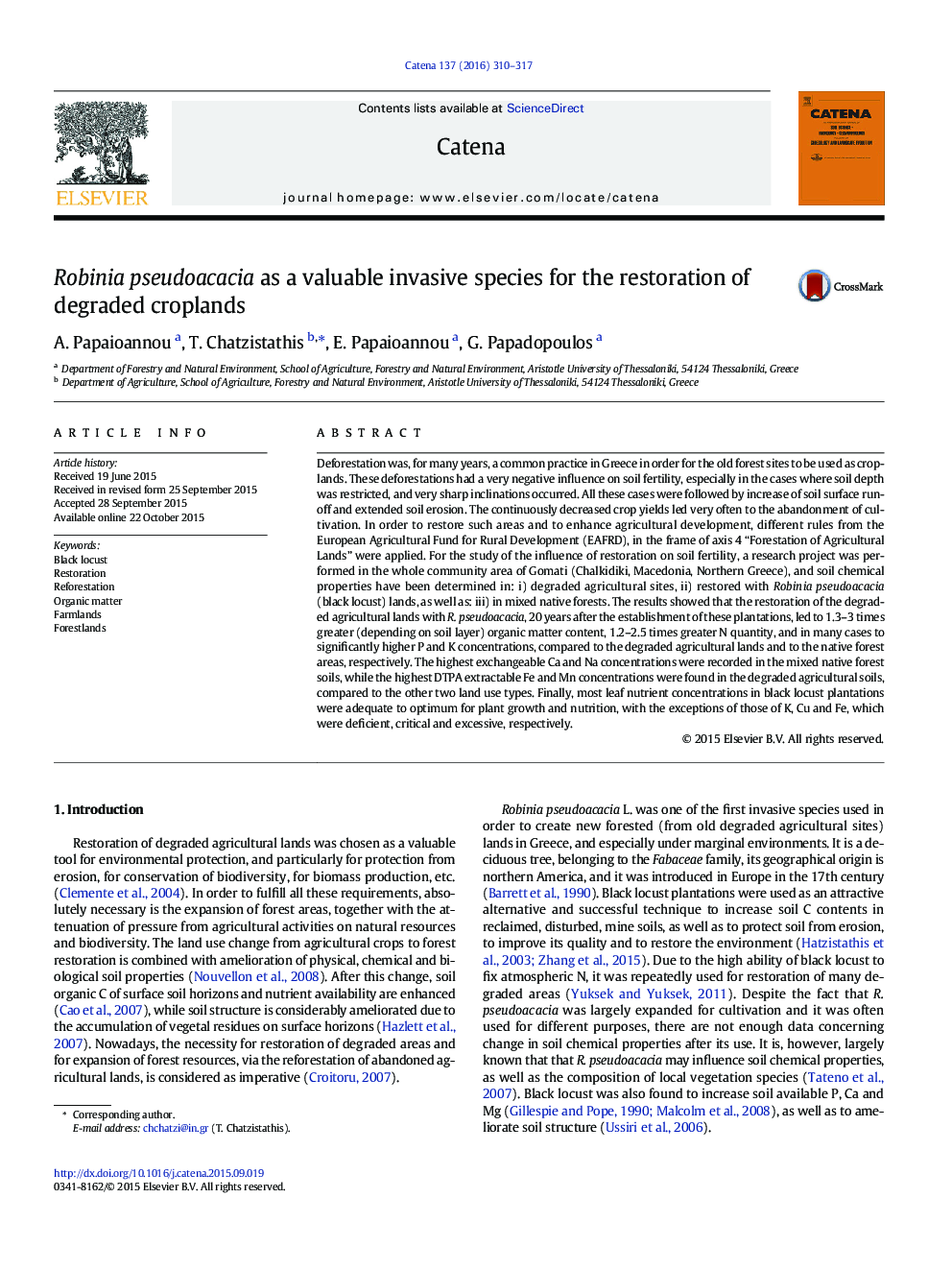| کد مقاله | کد نشریه | سال انتشار | مقاله انگلیسی | نسخه تمام متن |
|---|---|---|---|---|
| 6407974 | 1629215 | 2016 | 8 صفحه PDF | دانلود رایگان |

- After restoration with black locust, soil organic matter was increased 1.3-3 times.
- The highest N quantity was found in black locust soils.
- In many cases, the highest P and K concentrations were found in black locust soils.
- The highest exchangeable Ca and Na concentrations were recorded in forest soils.
- Leaf concentrations of most nutrients were adequate for black locust growth.
Deforestation was, for many years, a common practice in Greece in order for the old forest sites to be used as croplands. These deforestations had a very negative influence on soil fertility, especially in the cases where soil depth was restricted, and very sharp inclinations occurred. All these cases were followed by increase of soil surface runoff and extended soil erosion. The continuously decreased crop yields led very often to the abandonment of cultivation. In order to restore such areas and to enhance agricultural development, different rules from the European Agricultural Fund for Rural Development (EAFRD), in the frame of axis 4 “Forestation of Agricultural Lands” were applied. For the study of the influence of restoration on soil fertility, a research project was performed in the whole community area of Gomati (Chalkidiki, Macedonia, Northern Greece), and soil chemical properties have been determined in: i) degraded agricultural sites, ii) restored with Robinia pseudoacacia (black locust) lands, as well as: iii) in mixed native forests. The results showed that the restoration of the degraded agricultural lands with R. pseudoacacia, 20Â years after the establishment of these plantations, led to 1.3-3 times greater (depending on soil layer) organic matter content, 1.2-2.5 times greater N quantity, and in many cases to significantly higher P and K concentrations, compared to the degraded agricultural lands and to the native forest areas, respectively. The highest exchangeable Ca and Na concentrations were recorded in the mixed native forest soils, while the highest DTPA extractable Fe and Mn concentrations were found in the degraded agricultural soils, compared to the other two land use types. Finally, most leaf nutrient concentrations in black locust plantations were adequate to optimum for plant growth and nutrition, with the exceptions of those of K, Cu and Fe, which were deficient, critical and excessive, respectively.
Journal: CATENA - Volume 137, February 2016, Pages 310-317